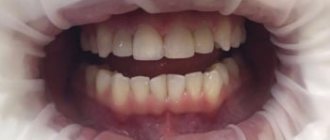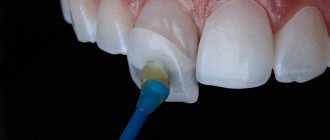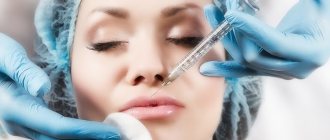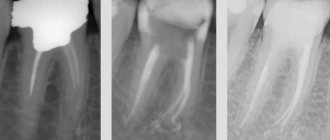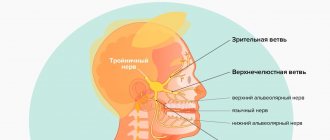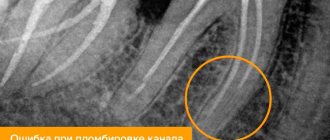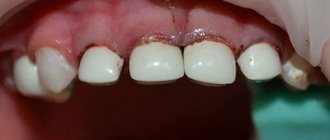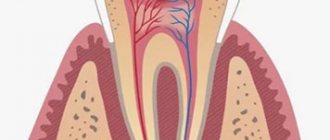Inflammation and piercing toothache are frequent companions of various dental problems: pulpitis, periodontitis and other diseases. They talk about damage to the dental nerves and the need for immediate intervention. In many cases, removal of the tooth nerve is considered the only effective treatment method, but the procedure is quite complex and will include a number of stages: from depulpation and nerve extraction to filling.
Removal of the dental nerve includes a set of works to remove the affected pulp tissues from the dental canals. It is carried out in extreme cases when traditional therapeutic methods cannot stop the development and stop the pathology. To minimize discomfort, anesthesia is performed.
Tooth anatomy and dental nerve function
Any person with normal anatomical development has 32 teeth, 16 each in the upper and lower jaws. All teeth are universal and have a three-layer structure, including:
- The pulp is the base of the tooth, where capillaries, blood vessels and nerve endings are concentrated. It is the most protected layer, so the problems that arise indicate the high complexity of the dental problem;
- Dentin - the middle layer, which is the most voluminous dental tissue, ensures the transfer of nutrients to dental tissues, including enamel;
- Enamel is a fairly thin but very durable shell that protects the tooth from adverse mechanical, chemical and physical factors.
Many people do not know what depulpation means during the process of nerve removal - let us clarify the meaning. According to official medical terminology, the pulp cannot be called a nerve. But it is an integral part of the tooth’s innervation system and is responsible for its sensitivity, so most dentists, to simplify the explanation to the patient, often talk about tooth depulpation in the context of dental nerve extraction.
Due to physiological characteristics, the function of the dental nerve can only be considered in the context of the work of the neurovascular bundle, which is responsible for:
- Sensitivity – provides complex innervation of the tooth, responsible for: response to mechanical pressure, shock, thermal effects, acidic environment, etc. This is the most important function that sends a signal to the brain when adverse factors influence the surface of the teeth;
- Nutrition – responsible for feeding the entire tooth structure with minerals and microelements: pulp, dentin and enamel. It is also the main component that ensures the growth of dental tissue as the child grows up: from the moment of formation of the rudiments of teeth in infancy, until the complete change, which ends after the germination of wisdom teeth;
- Blood supply – is responsible for normalizing blood flow throughout all dental tissues.
Each person, with normal development of the dental system, has a pulp in the structure of the tooth - its presence does not depend on the correct growth of the teeth or the uniformity of the row.
Activities before visiting the doctor
If the tooth hurts and it is obvious that nerve removal cannot be avoided, you should immediately make an appointment with the dentist. To relieve pain in the period before your visit to the office, you can perform a number of manipulations. Pain can be reduced or relieved by:
- Carefully remove food debris from the cavity in the tooth.
- Rinse with warm soda solution.
- Avoid chewing food on the affected side.
- Minimize exposure to high and low temperatures (including cold air).
- Mouth slightly open. If the bite is incorrect, closing the jaws may increase the pain.
- Painkillers.
PROMOTION
Inexpensive dentistry
Prices are 1.5-2 times lower
In what cases is a nerve in a tooth removed: indications and contraindications
The main indication for tooth depulpation is pulpitis (inflammation of the pulp). As a rule, it is a consequence of advanced caries, penetrating deep into the tissue. Due to carious lesions, intensive destruction of the protective enamel occurs, followed by penetration and deepening of the infection, which leads to inflammation of the neurovascular bundle. The process is accompanied by intense pain in the affected area.
Other indications for the procedure are:
- Dental diseases – pulpitis, granulomas, cysts, periodontitis, the need for orthopedic treatment with a load on the supporting teeth;
- Unprofessional treatment is the result of improper actions by the dentist or the patient’s failure to comply with recommendations. Often occurs due to the preparation of large carious cavities with additional trauma to the pulp;
- Prosthetics - depulping a tooth before prosthetics - the price of which can vary significantly depending on the type of tooth and the complexity of the problem, is a mandatory preparatory procedure. It is also performed when installing bridges to fix them on supporting teeth;
- Mechanical injuries - impacts, large chips and cracks.
This procedure is prescribed by a dentist in a number of cases, so only a doctor can accurately answer when a nerve in a tooth needs to be removed, after a comprehensive examination and additional diagnostics of a particular patient. The question of whether it is worth removing the nerve from a tooth is determined taking into account the feasibility and medical indications.
Despite the abundance of indications for the procedure, as well as explanations for why nerves in the teeth are removed, there are a number of contraindications in which the procedure is not recommended or is strictly prohibited. The main contraindications include:
- All forms of stomatitis – it is first necessary to carry out treatment and eliminate the bacterial problem. Otherwise, there is a high probability of infection of the internal tissues of the tooth, including damage to the jawbone;
- Cardiovascular diseases – tachycardia, arrhythmia and other pathologies of the human cardiovascular system;
- Mental disorders are a whole complex of pathological mental disorders;
- Oncological diseases – malignant neoplasms and leukemia;
Note! Removal of the dental nerve, as well as treatment of dental pathologies of varying complexity during pregnancy is permitted! In this case, the dentist uses special treatment protocols that have minimal impact on the fetus.
About dental anesthesia
Standard dental practice is an injection of anesthetic; Taking tablet analgesics before going to the dentist is not recommended, as it leads to a decrease in the effectiveness of anesthesia (usually the effect of an anesthetic injection is 45 minutes). For patients suffering from a fear of injections, it is possible to use paste anesthesia, which has a similar effect.
The choice of anesthesia is up to the dentist; Taking into account the individual pain sensitivity threshold of each patient, the standard dose is sometimes doubled or even tripled. With proper selection of an anesthetic, discomfort during the procedure for the patient is excluded.
Methods and scheme for removing the nerve of a tooth
Today, the diagram of how to remove the nerve of a tooth is one of the most common questions to the dentist. Every patient wants to receive the most conservative and effective treatment. Doctors can use various schemes, so the doctor determines how to remove the nerve of a tooth directly after a diagnostic examination (taking into account the characteristics of the development of the pathology, as well as the anatomical and physiological characteristics of the patient’s body).
Answering the question of how the dental nerve is now removed, experts note that two main methods are used: with the help of arsenic and modern drugs. Let's look at them in more detail:
- Medicine in the tooth to remove the nerve is the most common and proven method of depulpation, providing maximum effectiveness and minimal discomfort for the patient. It provides anesthesia, opening access to the pulp, its comprehensive removal, as well as subsequent filling of the cleaned canal.
Thanks to the use of high-quality anesthesia and effective medications, nerve removal takes no more than 1 hour. In rare cases, if there are serious complications or anatomical defects, the process may take several hours.
- Arsenic is an outdated method used by some dentists. It involves visiting a doctor twice and carries certain risks for the patient’s health and possible pain.
The main disadvantage of using arsenic is increased discomfort for the patient. Removal is accompanied by unpleasant pain (during the period of deactivation of the nerve by arsenic), as well as a long period of treatment - requiring at least 1 week. During the period of wearing arsenic, a not very reliable temporary filling is installed.
Modern dental clinics have specialized diagnostic and treatment equipment that allows a specialist to control all stages, directly observing how the dental nerve is removed. After the procedure, the dental canal is filled in a similar way to the treatment of periodontitis, and a control diagnostic image is also taken to exclude the presence of cavities in the root canal.
Conservative treatment
The conservative method of treating inflammation is otherwise called biological and involves the preservation of nerve endings. Unfortunately, this option is only suitable for restoring a tooth at an early stage of pathology; in case of extensive tissue damage, more drastic methods will have to be used.
Conservative treatment is indicated for acute pulpitis, in cases where the chamber was opened due to negligence, as well as for the chronic course of a fibrotic disease.
This method also has a number of contraindications. The main ones are considered to be old age and the presence of serious inflammatory processes of the periodontium.
Also, this method of treatment will have to be abandoned if caries is detected in the neck or roots of the tooth, if prosthetics are needed in the future, if you are allergic to the materials used, as well as if existing diseases worsen at the time of treatment.
Is it painful to remove a nerve from a tooth: stages of removal
Today, it is possible to remove a nerve from a tooth absolutely painlessly and with minimal discomfort for the patient! Modern dentistry involves the use of high-precision equipment, effective painkillers, as well as plastic materials that ensure a minimum period of adaptation of the tooth to the installed filling.
Pain can only be felt if an outdated method using arsenic is used, as well as if the patient’s body has allergic reactions to painkillers. But the percentage of such patients is extremely small.
The removal process usually takes place in several stages:
- Primary examination of the patient’s oral cavity – an x-ray is taken, allowing the doctor to determine the anatomical structure of the causative tooth;
- Anesthesia - the anesthesiologist gives an injection that relieves tooth sensitivity during the procedure. In rare cases, general anesthesia may be used (if medically indicated);
- Removal of the nerve is a key stage, which involves comprehensive cleaning of the canal from dentin and the neurovascular bundle. It is very important that the specialist follows the rules for canal treatment - this will prevent possible complications in the future;
- Filling the canal is the final and very important stage of treatment. A permanent filling is installed, filling the previously cleaned canal. It is important that there are no even the smallest voids left in it, therefore, to control the quality of the manipulation performed, an additional x-ray of the tooth is prescribed.
After completing all the manipulations, the doctor conducts a comprehensive consultation with the patient, where he talks about the rules for caring for filled teeth, and also talks about how much the tooth hurts after removal of the nerve and in what cases you need to go to the dentist.
Why can a tooth hurt after pulp removal?
This often happens: the nerve has already been removed, but the pain remains. Such manifestations are acceptable in the first 3-4 days as a natural reaction of the body (for example, to clenching the jaws or to temperature stimuli).
Other causes of toothache after pulp removal:
- Careless cleaning of the canals, preservation and intensification of the inflammatory process due to incomplete removal of tissue damaged by caries.
- Using during the procedure a pulp extractor that is not suitable for the size of the canal or improper handling of the instrument.
- Broken dental instrument, retention of its remains in the upper part of the root (such a medical error leads to the need to remove the tooth).
- The occurrence of a secondary inflammatory process in the treated canals (residual pulpitis) occurs against the background of an incompletely removed nerve.
- Allergic reaction of the patient to the filling material.
Will root canal cleaning save a tooth that is more than 50% destroyed?
Yes, quite, but instead of installing a composite filling, it is recommended to install a microprosthesis or a ceramic crown. The only difference is in the final stage of the operation.
Clinical case: the patient was diagnosed with advanced caries, which developed into pulpitis. The tooth is badly damaged, but the root is intact. The dentist removes necrotic tissue, qualitatively treats the canal passages, cleans them under a microscope, and then places a microprosthesis or a full-fledged crown.
